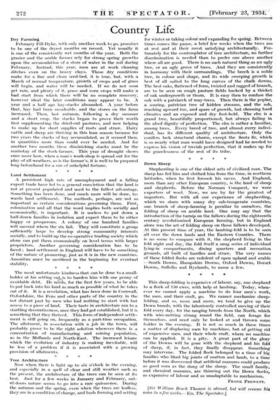Country Life
Dry Farming
February Fill-Dyke, with only another week to go, promises to be one of the dryest months on record. Yet usually it is one of the consistently wet months of the year. Both the grazier and the arable farmer rely for strong spring growths upon the accumulation of a store of water in the soil during February. Instead, this year, men are at work cleaning ditches even on the heavy clays. These dry conditions make for a fine and clean seed-bed, it is true, but, with a March of normal temperature, growth of Crops and of grass will begin, and water will be needed. If we do not soon get rain, and plenty of it, grass and corn crops will make a bad start from which there will -be no complete recovery, however ideal the later conditions may appear to be. A year and a half ago hay-stacks abounded. A year before that, hay had been unsaleable, and the stores on the farm increased. Then, last autumn, following a dry summer and a short crop, the stacks began to prove their worth first supplementing the dried-out pastures, and now helping to make up for short supplies of roots and straw. Dairy cattle and sheep are thriving in this lean season because for two years the stacks of hay accumulated, as it seemed then, in quantities more than could ever be needed. And for another two months these diminishing stacks must be the mainstay of the stock-farmer. This year of drought shows once more how, when a man's work-shop is spread out for the play of all weathers, as is the farmer's, it is well to be prepared long beforehand for a run of unhelpful fortune.
















































 Previous page
Previous page